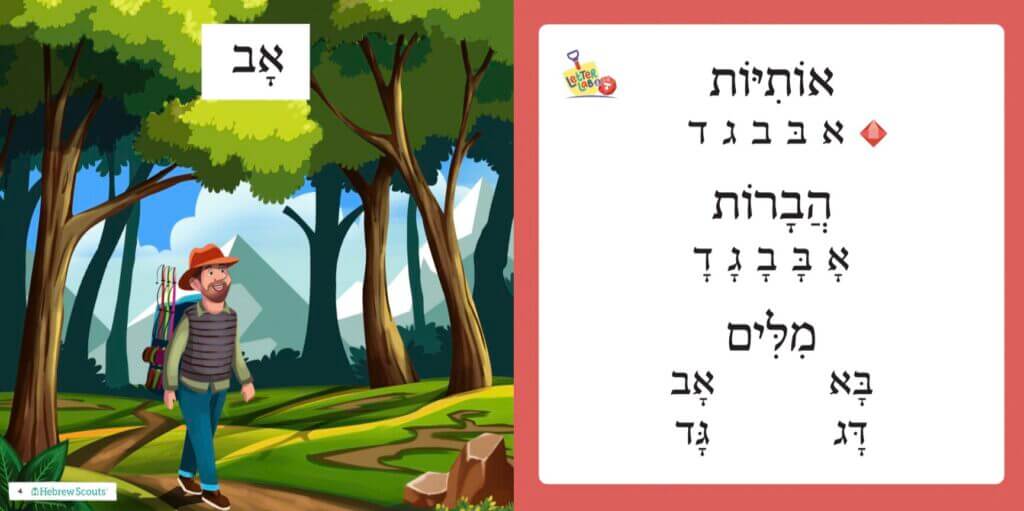How many letters does a student need to know before they can start reading books? Not many.
It is not necessary to wait until a child learns all the letters before beginning reading word and stories. With just a few letters and one vowel, students can learn syllables and how to read one syllable words like גָּד, דָּג ,בָּא and אָב. By adding just a few more letter, they will be able to read words like זָהָב ,בָּאָה ,אָח and וָו.
Starting decoding instruction early, as opposed to waiting until children know all the letters, has a couple of impactful benefits for all students, especially at-risk and struggling students. Firstly, this practice allows us to begin building a strong foundation of critical word reading skills, allowing us to build in the extra practice that can prevent children from falling behind. Additionally, children will experience that learning more letters will enable them to improve their reading abilities and their access to more interesting texts. Best of all, children will experience a sense of pride and and accomplishment.
In which order should we introduce letters?
Regarding English, there is no agreed upon evidence-based sequence for introducing letter and their sound correspondences. It makes the most sense to begin with high utility letters such as a, m, t, i, s, r as opposed to teaching the alphabet in order, because these high utility letters can be combined to make a large number of simple words. In short, there is a great return on investment.
Additionally, when introducing letters, it is helpful to separate letters that produce similar sounds or that look similar, such as a and e, and the b and d, (Carnine, 1976, 1980).This allows us to help children master one element before teaching the second similar element that can be easily confused. Eventually, children will need to discriminate all the similar letters but it makes it easier to separate them at first.
These letter introduction practices have been used successfully for English and many other languages. However, Hebrew is different. Hebrew is not just a regular language; it is the language of angels. There is meaning behind each letter, each vowel and their sequence. Since Mount Sinai, when we officially received the Hebrew letters from heaven, many Jews have been practicing the tradition of teaching children the letters and vowels in order, they way they appear in the Siddur. We don’t have to change the order of the letters and vowels for children to succeed. Teaching the letters in their holy sequence can be effective and beautiful.
Perhaps we can measure how many letters a child knows or how many words they can read per minute. But how can we can measure the value of experiencing a 3,000 year-old tradition, a tradition that has infinite layers of mystical energies beyond our intellect. This experience is something we may feel in our hearts and souls but it isn’t something we can easily measure.
Here is an example of a really simple decodable text that requires a child to know only five letters, combine them with one vowel, to read five syllables and four words.







